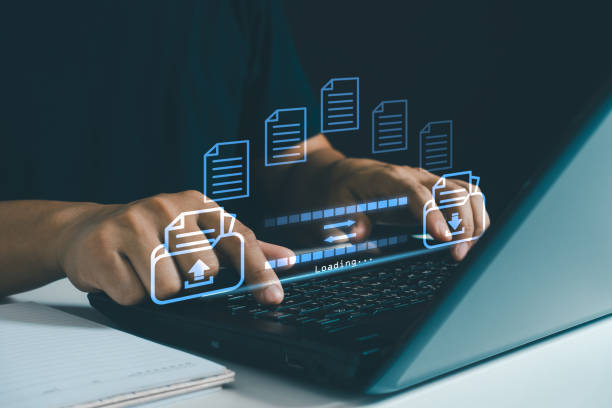Introduction to On-Page SEO and Its Critical Importance in Today’s Digital World
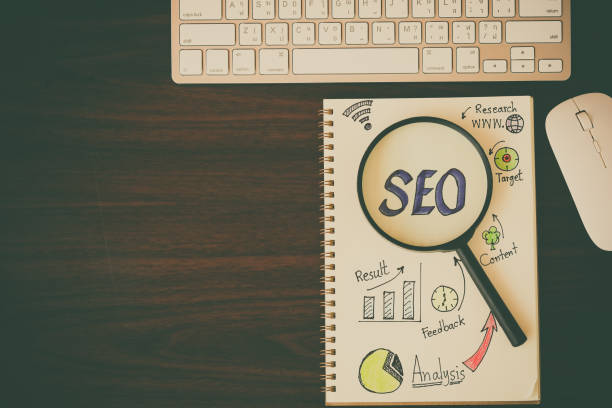
#Internal_SEO or #On_Page_SEO, is the cornerstone of any successful search engine optimization strategy.
This branch of SEO refers to all actions you take within your website to improve rankings in search results and attract more traffic.
Unlike off-page SEO which focuses on external factors (such as backlinks), on-page SEO provides you with complete control over your website’s content, structure, and technical aspects.
The importance of this branch of SEO stems from the fact that search engines like Google first and foremost evaluate your website’s internal content to assess its relevance to searched queries by users.
A website with strong on-page SEO not only helps search engines better understand your content, but also significantly improves user experience, which is itself an important factor in achieving higher rankings.
In other words, on-page optimization goes beyond keywords; this process involves creating valuable content, proper structuring, and providing an unparalleled user experience.
Without a strong foundation in on-page SEO, even the best off-page SEO strategies cannot achieve desired results.
This explanatory and educational section is the first step in understanding the hidden potential of optimizing your website.
Are you concerned about your e-commerce website’s low conversion rate and not achieving desired sales?
Rasaweb is your specialized solution for having a successful e-commerce website.
✅ Significant increase in conversion rates and sales
✅ Professional and user-friendly design to satisfy customers
⚡ Ready for a transformation in online sales? Get a free consultation!
Keywords and Their Place at the Heart of On-Page SEO
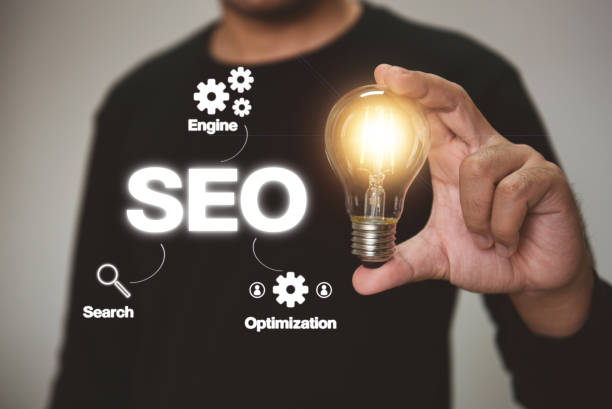
After understanding the general concept of on-page SEO, the next step is mastering the art of selecting and using keywords.
Keywords are the backbone of any content strategy and play a vital role in on-page optimization.
Finding suitable keywords means identifying the phrases your target audience enters into search engines to find products, services, or information similar to what you offer.
This keyword research process must be carried out with precision and analysis, not just based on guesswork.
After identification, the method of placing these words within the content is crucial.
Keywords should be placed naturally and without excess in various parts of the page, including the Title Tag, Meta Description, Headings, and the main body of the text.
Intelligent use of synonymous and LSI (Latent Semantic Indexing) keywords also helps search engines better understand the semantic context of your content and prevents excessive keyword repetition, which can lead to penalties.
This specialized and guiding section shows how, by carefully selecting and correctly applying keywords, the potential of on-page SEO can be maximized to drive targeted traffic to your website.
Optimizing Title Tag and Meta Description: User’s First Encounter with Your Content
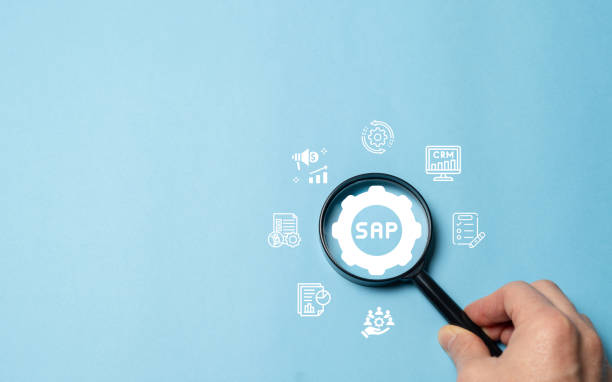
The Title Tag and Meta Description are not only the first pieces of information search engines receive from your page, but more importantly, they are the first things users see in search results.
Optimizing these two elements is an educational and vital component of on-page SEO that directly impacts your click-through rate (CTR).
The title tag should include the page’s main keyword and, at the same time, be attractive and persuasive to convince the user to click.
The appropriate length for a title tag is usually between 50 to 60 characters to be fully displayed in search results.
The meta description, although not directly affecting ranking, can strongly influence a user’s decision to click by providing an attractive and relevant summary of the page’s content.
Using keywords in the meta description will be displayed in bold in search results and will attract the user’s attention.
Both elements should be unique for each page and accurately reflect the page’s content to prevent user confusion and search engines.
Ultimately, the quality and appeal of these two tags are the gateway for organic traffic to your website through on-page optimization.
Here is a comparison table for a better understanding of Title Tags and Meta Descriptions:
| Feature | Title Tag | Meta Description |
|---|---|---|
| Main Goal | Attract clicks, show main topic of the page to search engine and user. | Encourage user to click, provide an attractive summary of content. |
| Length Limit | 50-60 characters (for full display in search results). | 150-160 characters (for full display in search results). |
| Impact on Ranking | Direct and very strong. | Indirect (through improved CTR). |
| Suggested Content | Includes main keyword, brand name, attractive and accurate. | Includes keywords, Call to Action, attractive and concise. |
URL Structure and Its Impact on Search Engines’ Understanding of Your Content

The URL structure of your website’s pages is an often-overlooked yet vital element in on-page SEO.
An optimized URL not only helps search engines better understand the topic of your page but also improves user experience.
The URL should be short, descriptive, and contain the main keywords of the page.
Using hyphens (-) to separate words instead of underscores (_) or spaces is an industry standard and helps with URL readability.
Avoid complex and irrelevant parameters in your URLs, as this can lead to crawling and indexing issues by search engines.
For example, a URL like www.yourwebsite.com/blog/on-page-seo-guide is much better than www.yourwebsite.com/article?id=123&cat=blog.
This guiding and explanatory approach to URL structure signals to Google that your page is organized and about a specific topic, ultimately helping to improve your ranking in search results.
A logical and hierarchical URL structure not only aids on-page SEO but also allows users to easily navigate your site and understand its structure.
This part of on-page optimization forms the foundation of a strong site architecture.
Did you know that 85% of customers check your company’s website before any interaction?
With Rasaweb, build a corporate website worthy of your credibility.
✅ Increase credibility and customer trust
✅ Attract high-quality leads
⚡ Get a free website design consultation!
Correct Use of Headings (H1-H6) and Their Role in Content Structure

Headings (H1 to H6) are powerful tools for organizing content and improving readability, playing a key role in on-page SEO.
The H1 tag should be used as the main title of the page and appear only once per page.
This tag usually contains the main keyword of the page and informs search engines and users about its primary topic.
H2, H3, and other tags are used to divide the page’s content into smaller and more logical sections.
This hierarchy helps search engines understand the structure and importance of different parts of your content, and also allows users to quickly scan and find the content they are looking for.
Using relevant keywords in these headings (without overdoing it) also helps with the on-page optimization of the page.
An article with poor heading structure, even if it has excellent content, may perform poorly in search results because search engines cannot easily identify its main topics.
This specialized and educational approach emphasizes how proper structuring using headings not only improves user experience but also sends strong signals to Google about the quality and organization of your content.
Consequently, effective on-page SEO requires careful attention to these details.
Optimizing Images for On-Page SEO: Beyond Visual Appeal
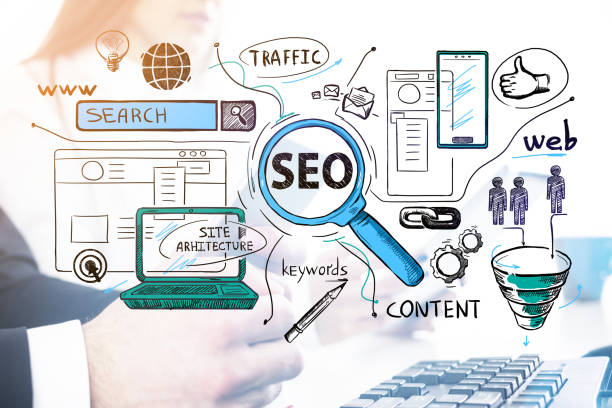
Images play an important role in the visual appeal of your website, but their potential in on-page SEO is often overlooked.
Image optimization goes beyond merely reducing their size for loading speed; this process includes using Alt Text attributes, appropriate file names, and correct dimensions.
Alt Text, or alternative text, is a textual description of the image content that not only helps search engines understand the image and rank it in image searches but is also beneficial for users who, for various reasons (such as slow internet or visual impairments), cannot see the image.
Image file names should also be descriptive and include relevant keywords (e.g., on-page-seo-graphic.jpg instead of IMG_001.jpg).
Optimizing image size and format is also crucial for page loading speed; heavy images can significantly slow down your site, which is a negative factor in Google’s algorithms and affects user experience.
This guiding and specialized section helps you not only improve your site’s appearance by optimizing images but also contribute to your overall on-page SEO and attract more traffic through image search.
Remember that even the smallest details in on-page SEO can make a big difference.
Internal Linking and User Experience Improvement: A Roadmap for Search Engines and Users

Internal linking is one of the most powerful yet often underestimated aspects of on-page SEO.
This process involves creating links from one page on your website to another page on the same website.
Internal links not only help search engines understand your site’s structure and discover new pages, but also help distribute “link equity” (PageRank) across the entire site.
This means that ranking power is transferred from stronger pages to weaker ones.
Furthermore, internal links play a vital role in improving user experience (UX); they allow users to easily navigate your site, discover relevant content, and spend more time on your site.
Using descriptive and relevant anchor texts for internal links sends clear signals to search engines about the topic of the linked page.
For example, instead of “Click here”, use “Comprehensive Guide to On-Page SEO“.
This analytical and guiding aspect shows you how, with careful planning of internal links, you can not only improve your rankings but also encourage users to delve deeper into your content.
Below, you can see examples of internal linking types and their benefits:
| Type of Internal Linking | Description | SEO and UX Benefits |
|---|---|---|
| Contextual Links | Links placed within the main body of the content, referring to other relevant content. | PageRank distribution, improved user experience by providing relevant content, increased time on site. |
| Navigational Links | Links located in menus, footers, or sidebars of the site. | Helps search engine crawling, improves accessibility and site navigation for users. |
| HTML and XML Sitemaps | A list of all pages on your site (HTML for users, XML for search engines). | Helps search engines discover and index all pages, improves overall navigation. |
| Breadcrumbs | Navigation path showing the user’s location within the site hierarchy. | Improved user experience, reduced bounce rate, helps search engines understand site structure. |
Website Loading Speed and Its Crucial Role in On-Page SEO and User Experience
![]()
In today’s fast-paced world, website loading speed (Page Speed) has become one of the most important factors in on-page SEO.
Google has repeatedly emphasized that site speed is a ranking factor, as it directly impacts user experience.
Today’s users have high expectations, and if a site doesn’t load within a few seconds, they quickly abandon it.
This not only leads to an increased bounce rate but also signals to search engines that your site does not provide an optimal user experience.
Tools such as Google PageSpeed Insights and Lighthouse can help you analyze site speed and identify issues.
Optimizing images, compressing code (CSS, JavaScript, HTML), utilizing browser caching, and choosing appropriate hosting are among the key measures to improve website loading speed.
This informative and analytical section shows how even a small delay in page loading can negatively affect your ranking and ultimately your organic traffic.
Investing in improving site speed is an investment in the future of your on-page SEO and the success of your online business.
Are your online sales not what you expected? With Rasaweb, permanently solve the problem of low sales and poor user experience!
✅ Increase visitor-to-customer conversion rate
✅ Create a pleasant user experience and boost customer trust
⚡ Act now to receive a free consultation!
Producing Quality Content and Thought-Provoking Content: Responding to User Needs

Content is king, and this statement holds more true than ever in the realm of on-page SEO.
Producing high-quality, valuable content relevant to the audience’s needs is the backbone of any on-page optimization strategy.
Your content should not only provide comprehensive and accurate information but also answer potential user questions and even produce thought-provoking content that encourages users to think and interact more.
This type of content, in addition to keeping users on your site, also increases the likelihood of sharing and earning natural backlinks.
Specialized and in-depth content (Long-form Content) on a specific topic often ranks better than shallow and short content in search results.
Also, regularly updating content and adding new information shows search engines that your site is active and dynamic.
In this specialized and analytical section, it is emphasized that your content should go beyond keywords; it should offer solutions, education, entertainment, and inspiration.
Successful on-page SEO produces content that is not only appealing to search engines but is primarily written for humans.
Content quality ultimately determines success.
Monitoring and On-Page SEO Tools: The Path to Continuous Improvement
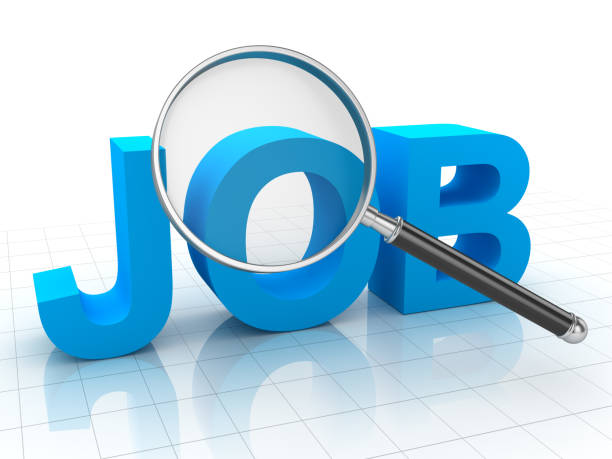
After implementing on-page SEO strategies, your work has just begun.
Regular monitoring of website performance and the use of analytical tools are essential for continuous improvement and maintaining rankings in search results.
Tools such as Google Search Console and Google Analytics are two free and powerful tools that provide valuable insights into how search engines interact with your site and user behavior.
Google Search Console helps you see crawl issues, site errors, keywords you’ve ranked for, and page performance.
Google Analytics also provides more detailed information about site traffic, acquisition sources, bounce rate, and user behavior on different pages.
Furthermore, specialized SEO tools like SEMrush, Ahrefs, or Moz can provide deeper analyses of on-page and off-page SEO, competitors, and keyword opportunities.
This educational and guiding section emphasizes the importance of data analysis and data-driven decision-making.
On-page SEO is not a one-time process, but a path of continuous improvement that requires monitoring, testing, and updating based on the latest Google algorithm changes and user needs.
Frequently Asked Questions
| Row | Question | Answer |
|---|---|---|
| 1 | What is On-Page SEO? | On-page SEO refers to a set of actions performed within the website (on its pages) to improve the site’s ranking in search engine results. This includes optimizing content, site structure, and HTML codes. |
| 2 | Why is On-Page SEO important? | On-page SEO helps search engines better understand page content and determine whether that page is relevant and valuable for user searches. This better understanding leads to higher rankings. |
| 3 | What is the first and most important step in On-Page SEO? | Keyword Research is the most crucial initial step. By finding suitable keywords, targeted content relevant to user needs can be produced. |
| 4 | What is the role of the Title Tag in On-Page SEO? | The title tag is one of the most important ranking factors and should include the main keyword. This tag is displayed as the page title in search results and influences the click-through rate (CTR). |
| 5 | What is the importance of Meta Description? | The meta description does not directly affect ranking, but by providing an attractive summary of the page’s content in search results, it can entice users to click, thereby increasing the click-through rate (CTR). |
| 6 | Why is the use of headings (H1, H2, etc.) important in content? | Headings help structure content and improve readability for users and search engine crawlers. Using keywords in headings also helps search engines better understand the topic. |
| 7 | What does Image Optimization in On-Page SEO include? | It includes compressing images to reduce size, using descriptive and relevant file names, and filling the Alt tag (alternative text) with relevant keywords to help search engines understand the image content. |
| 8 | What is Internal Linking in On-Page SEO? | Internal linking refers to creating links between different pages of a website. This helps distribute page authority (Link Equity), improve user experience, and assist search engine crawlers in discovering new pages. |
| 9 | Why is Page Speed important for On-Page SEO? | Page loading speed is a direct ranking factor and significantly impacts user experience. Slow pages can lead to an increased bounce rate and reduced user engagement. |
| 10 | What role does quality content play in On-Page SEO? | Quality, comprehensive, unique, and valuable content for the user is the core of on-page SEO. This content not only attracts and retains users but also sends positive signals to search engines and contributes to better rankings. |
And other services of Rasaweb Advertising Agency in the field of advertising
Smart Brand Identity: Professional optimization to increase website traffic using user experience customization.
Smart Custom Software: A professional solution for customer acquisition focusing on SEO-driven content strategy.
Smart Advertising Campaign: An effective tool for campaign management with the help of user experience customization.
Smart Marketing Automation: An effective tool for user engagement with the help of user experience customization.
Smart Content Strategy: A combination of creativity and technology to increase sales by utilizing real data.
And more than hundreds of other services in the field of internet advertising, advertising consultation, and organizational solutions
Internet Advertising | Advertising Strategy | Advertorials
Sources
Yektaweb’s Comprehensive Guide to On-Page SEO
Web24’s On-Page SEO Training
Websima’s On-Page SEO Guide
Novin’s On-Page SEO Checklist
? Are you looking for a big leap in the online world? Rasaweb Afarin creates a powerful and effective presence for your business by offering innovative digital marketing solutions, including fast website design.
📍 Tehran, Mirdamad Street, next to Bank Markazi, Southern Kazeroon Alley, Ramin Alley, No. 6

